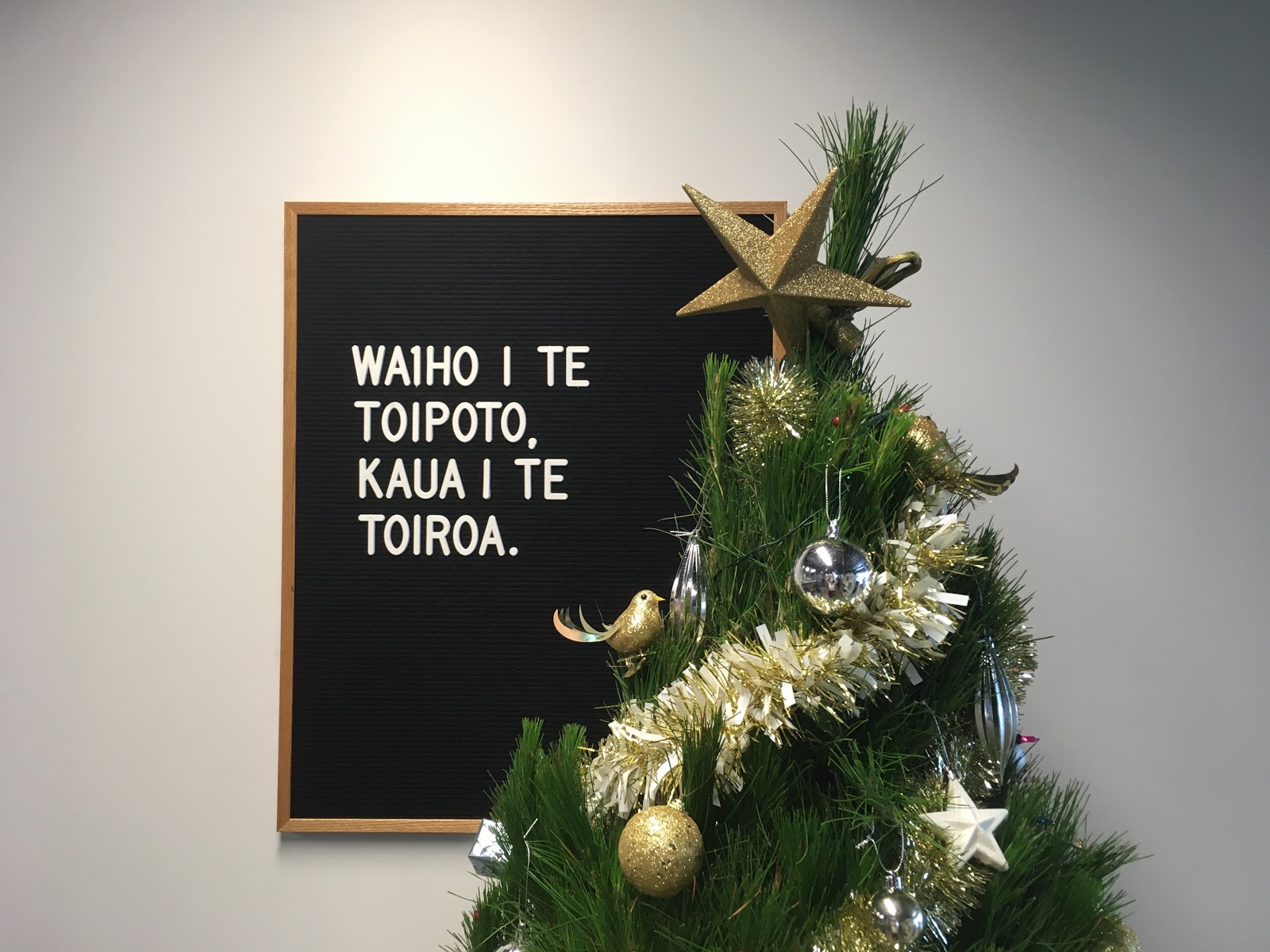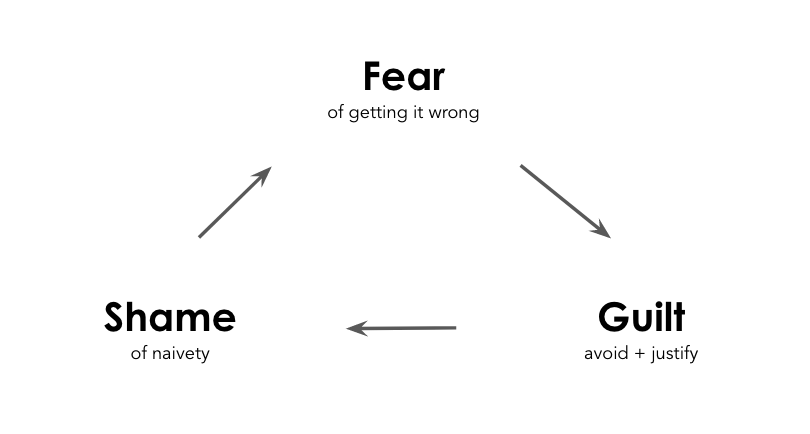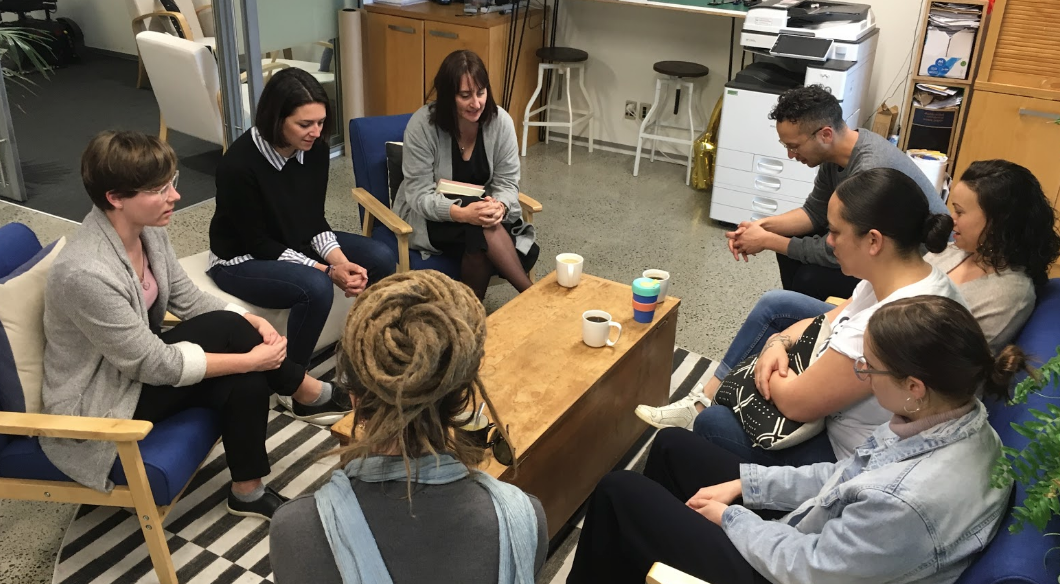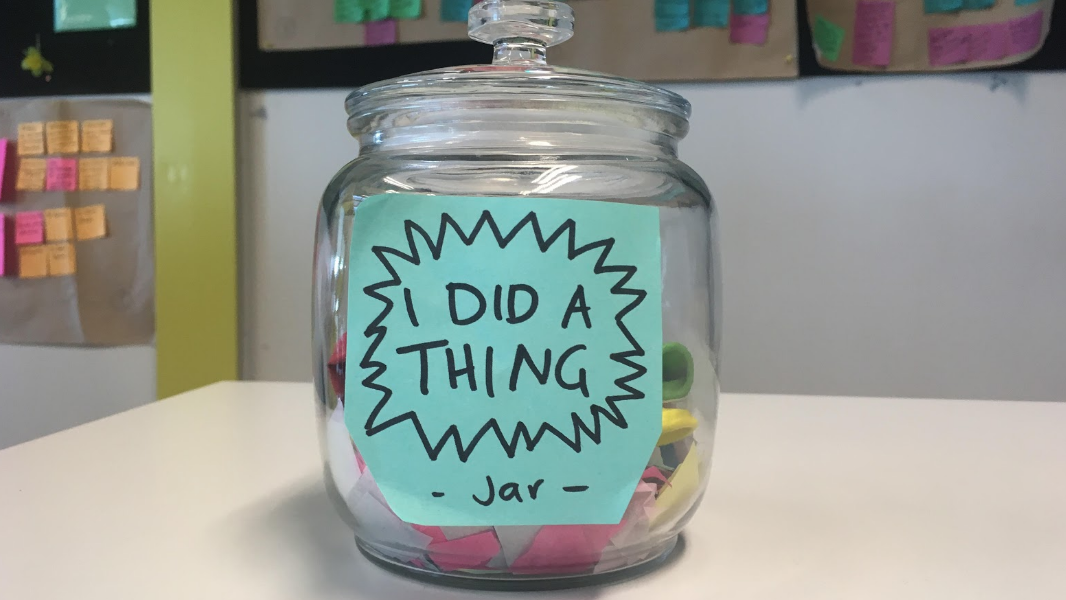
Cultural competency in the workplace
blog | 16 Dec 2019
Rachel Knight from Innovation Unit Australia New Zealand discusses how Innovation Unit started her cultural competency journey, and some ways to help people engage with Te Āo Māori in the workplace.
This is the second of two blog posts based on Rachel Knight’s and Kataraina Davis’ talk at the 2019 UX New Zealand conference. You can watch the talk here.
My cultural competency journey
Ko wai au? Who am I?
Ko Maungatere te maunga,
Mount Grey is my mountain,
Ko Rakahuri te awa,
Ashley river is my river,
Ko tuahiwi te marae,
Tuahiwi is my marae,
Ko Ngāi Tūāhuriri te hapū,
Ngāi Tūāhuriri is my sub-tribe,
Ko Ngāi Tahu te iwi,
Ngāi Tahu is my tribe,
Ko Rachel Knight ahau.
My name is Rachel Knight.
I’m a Project Lead here at Innovation Unit Australia New Zealand, and I have whakapapa/lineage to the south island tribe of Ngāi Tahu. However, I grew up in the far north in a small town called Kerikeri where I was largely disconnected from Te Āo Māori, or the Māori world. I’m ashamed to say that I saw it as something that was to do with my past, that had little relevance to my present, and even less to do with my future. A lot of that changed when I started at Innovation Unit and was mentored by my colleague Kataraina Davis and the wider team.
The cycle of avoidance
When I joined the team at Innovation Unit ANZ, I was stuck in a pretty negative cycle which might be familiar to many New Zealanders today – both Māori and non-Māori.

To start with, I was sitting in a place of shame. I was embarrassed that I didn’t know much about our past as a country, about what it meant to work with Māori (let alone BE Māori). I was embarrassed that I didn’t even really know why I should know these things, or how they were relevant to my day-to-day life.
This meant that if I ever had the opportunity to learn something new or give something a try, I would be terrified of getting it wrong, and essentially doing something offensive.
So, of course, I avoided these situations, and then felt guilty for not doing more. I tried to shift this guilt my justifying to myself by thinking ‘oh well, it doesn’t matter, it’s not really relevant to me anyway’. And so the cycle would continue.
When I started at Innovation Unit, my shame was confronted by:
Clear expectations of the minimum cultural competency requirements of me in my role, so I knew what I needed to work towards. We have a detailed framework with key competencies across our four pou/pillars, but the organisation’s commitment to cultural competency was made clear before I even started the job.
In the job description of the role, it was outlined as a key skill set I would need to have – or in my case, work towards – in order to do the job. Then, in my job interview, I was greeted in mihi (a formal spoken Māori greeting) which showed me that a) Innovation Unit took cultural competency seriously, b) that they lead by example, and c) it wasn’t just lip service.
Lastly, on my first day, I was welcomed through a pōwhiri process (Māori welcoming ceremony). Although this was pretty intimidating, what was exciting was that when it came to doing a round of whakawhanaungatanga (introductions from the team to get to know each other), almost everyone in the team could introduce themselves in some level of Te Reo Māori. This showed me that it was accepted as the norm in the wider team, and made me excited to be able to learn to do the same for the next person to join the team. These clear expectations helped me to move forward out of shame.
As for my fear, this was minimised by:
Ongoing opportunities to learn, try, and ask questions in a safe, encouraging environment. There’s a range of ways we do this at Innovation Unit and with our wider studio whānau, but one example is practicing karakia (setting intentions) and waiata (songs) at our weekly team check ins. By taking turns no matter what stage we were all at (from reading off paper, memorising, perfecting our pronunciation and digging into the deeper meaning), it meant we could all keep learning together and encouraging each other to keep giving it a go.

These safe and accessible ways to learnt meant I could leave my fear behind. Finally, my guilt was combated by:
Celebrating growth and reflecting on how far I’d come. There’s lots of different ways to celebrate growth – it could be as simple as a kind word of encouragement from a colleague (which often goes a long way!), a celebration jar, or having some kai/food together as a team to celebrate your collective learning journey. Sharing what you’ve learnt with someone else is another great way to remember what you’ve learnt and see how far you’ve come. By giving things a go and seeing how far I’d come, I was finally able to let go of my guilt.

Ways to help people to engage with Te Āo Māori (the Māori world) at your work.
We believe that these four wero/provocations a great place to start – or advance – your cultural competence journey. How do you, or your team or organisation:
- Define your commitments
What are you commitments to this country, the tangata whenua (people of this land), and therefore the Treaty of Waitangi? What does this look like in your day to day practice?
- Set clear expectations
What are your team’s non-negotiable minimum cultural competency requirements? What does everyone need to be able to work towards doing? How is this role modeled at every opportunity?
- Provide ongoing opportunities to try
What are your team’s weekly, monthly, and yearly rituals to continue learning and trying together in a safe way?
- Celebrate growth
What are the formal and informal ways that your team celebrates people’s growth – no matter what stage they’re at in their journey – to inspire others to step up and go further?
We would also add that although hiring Māori is important, it’s not enough to hire Māori and just expect them to hold the responsibility of upskilling your team. We’ve learnt that first, some supportive factors need to be in place:
- Clear mandate and time to build capability
If someone is joining the team with the expectation that they will build your team’s cultural competence, make sure this is clearly defined in their job description, and they are given the time to plan and do this justice within their role. - Enabling Māori to BE Māori
This means both at work, and away from work. Māori need to be confident in prioritising tikanga (Māori processes and right ways of doing things) at work, but also in prioritising important processes (such as tangihanga/mourning processes) which affirm and strengthen their identity and fill their mauri/energy cup. - Continue their own learning journey
Because many Māori have inherited a disconnection from Te Āo Māori/the Māori world (see: colonisation), you can’t assume how connected someone feels to Te Āo Māori. Cultural competency is an ongoing journey, so regardless of their level of knowledge of tikanga, Te Reo Māori and Te Āo Māori, all Māori can benefit from mentoring or other ways to continue their own learning journey.
We believe that if all organisations in New Zealand considered and acted on the above, we could start to break the negative cycle many of us are stuck in, and move forward together.

So let’s turn shame into curiosity to dig deeper and learn more from each other. Instead of being afraid of getting it wrong let’s build the courage to give it a go, and keep trying when we don’t get it right the first time. Instead of feeling guilty, let’s be proud of how far we’ve come on our journey, and become motivated to dig deeper and go further.
If you’d like to share these provocations with your team and start a conversation around cultural competency in your workplace, here is a booklet that might help.